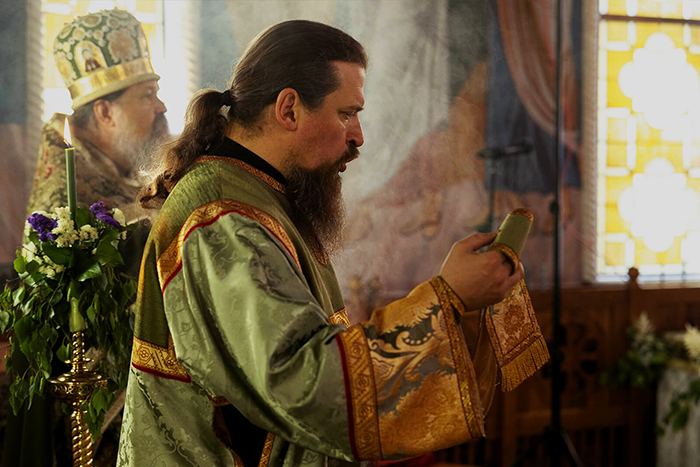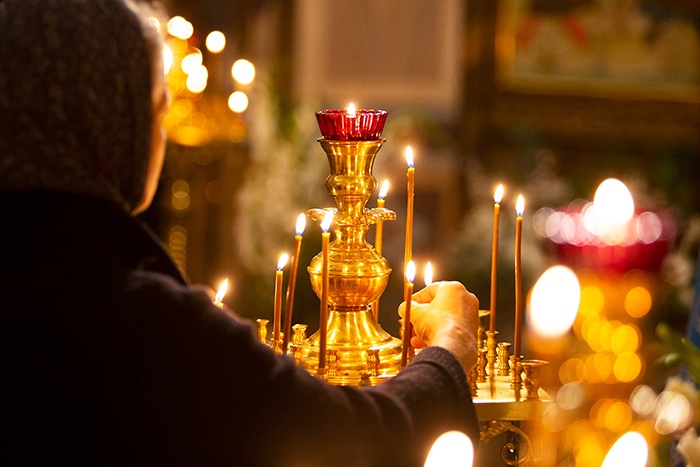
We often hear a prayer for those who labor in the Church in the litanies, the petitions led by the deacon: “Again we pray for those who bear fruit and do good works in this holy and all-venerable church, for those who labor and those who sing, and for the people here present who await Your great and rich mercy.” Who are those who labor?
It sounds simple: they are people doing any work in the temple, and the Church prays for them. However, those who sing and bear fruit also work to some extent, and yet they are referred to in prayer according to the nature of their work. Perhaps the laborers are all the rest, members of insignificant, peripheral professions, which nobody bothers to separate by their professional skills? Not at all.
There were many categories of church ministers in the ancient Church. The Church honored one of them with the name “laborers”. They were representatives of a psychologically and physically difficult profession: those church workers who buried the bodies of dead Christians, the gravediggers. “Honoring the remains of Christian martyrs caused a desire to oppose the murder of Christians and the disgrace of their holy relics by taking care of the properly arranged burial and protection of the relics.”
What was the work of the gravediggers like? “Gravediggers in the first centuries of Christianity were those responsible for the maintenance of cemeteries, including the excavation of catacombs”. We can imagine that these people were engaged in making burial places (digging a grave like modern diggers or chiselling it in stone), their decoration, creation of inscriptions (epitaphs), in short, they had to have diverse professional skills. Hence the generalization of “laborers” in the Greek text of the liturgy: κοπιώντων, derived from κοπιάω, “be tired”, “weary”, “work hard”. Let us digress from our subject, look at the Bible and notice that where Jesus Christ says, “Come unto me, all ye that labor and are heavy laden, and I will give you rest.” (Matthew 11:28), the word κοπιώντες, derived from κοπιάω, is also used here in its direct meaning.
The Latin term for gravediggers, copiates (from Greek κοπιάται) was “fossors” (Latin for “diggers”, “miners”, from “fodere”, to dig).
Since the second century fossors were engaged in the construction of catacombs and specially equipped cemeteries for the burial of dead Christians. “We should not think that catacombs were the only burial places in the Christian world of the first three centuries; most likely, they were created in certain cities and areas of the Roman Empire: Rome, Naples, Syracuse, Malta, Tunisia … in the most important cities. In all other parts of the empire, the dead were buried above the ground in mausoleums or simple graves.” The catacombs of the first three centuries of Christianity (although catacombs were created until the 410s) were actually the result of fossors’ work. Each cemetery had its own fossor association. Christians considered their hard work as a religious feat, paid for it and respected it. The construction of graves was dangerous due to heavy physical labor, persecution of Christians (cases of vandalism), when the activities of the fossors were prohibited and declared criminal. The work of the fossors was time-consuming and required patience. “They dug with a pick and shovel in the dim light of oil lamps. They used baskets or bags to remove dirt.”
The first record of fossors dates back to 303 and appears in the Christian ecclesiastical document Gesta purgationis Caeciliani in which fossors are mentioned among the minor clerics (ordinis minoris). Fossors appear later in the East. The Emperor Constantine, who approved 1100 burial men in the Church of Constantinople, added them to the church staff, and the Emperor Constantius exempted them from trade taxes in 357. “They are called clerics in this text. However, they were clerics in the sense that they were church personnel. Presumably, only the heads of the copiate boards were appointed by the rite of blessing. Most scholars believe that copiates constituted a special group only in some communities; the practice of assigning copiates for church service has never been widespread, either in the East or in the West. This rank was not included in the later hierarchy of clergy”. The decrees were later confirmed by the emperors Anastasius (491-518) and Justinian (525-565) (novellae 43 and 59).
Blessed Jerome (432-420) in his book On the Seven Degrees of the Church (Chap. 9) writes, “The first rank among clerics is the one of the fossors (Fossariorum), who, like Saint Tobias, are …exhorted to bury the dead”. Blessed Epiphanius of Cyprus (d. 403) in his Book of Faith (Ch. 20) calls the fossors “those who labor (κοπιαταί), who care for the bodies of the dead”. There were more than a thousand fossors in Constantinople at the time of Emperor Theodosius II (408-450). “Due to the fact that they were such a numerous and laborious class, the Church did not leave them without prayers”.
Translated by The Catalogue of Good Deeds
Source: https://pravlife.org/ru/content/kto-takie-truzhdayushchiesya-o-kotoryh-molitsya-cerkov




